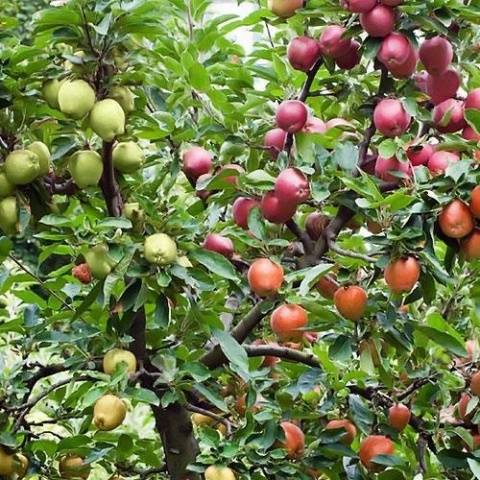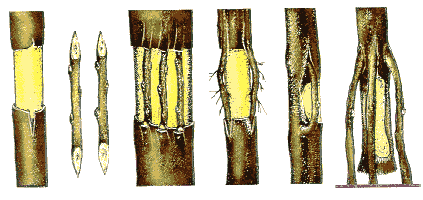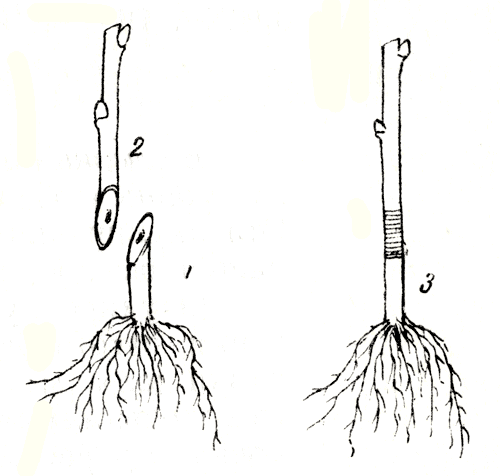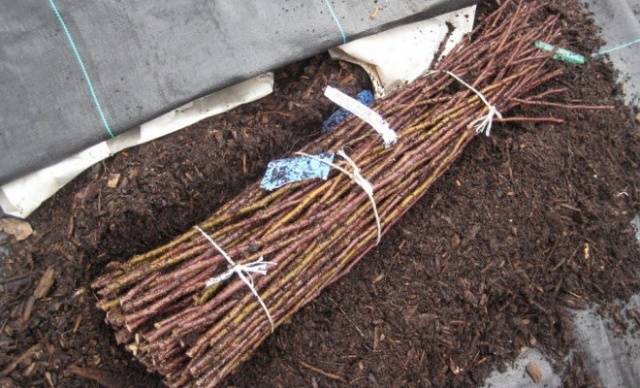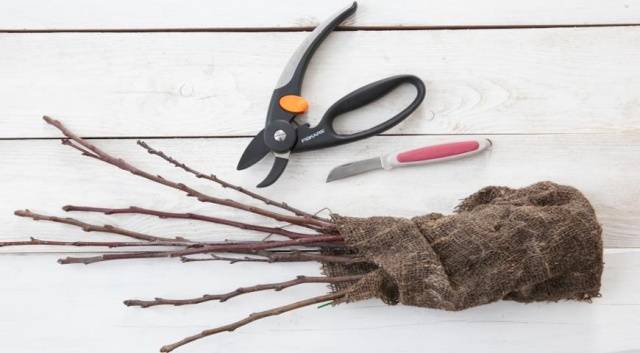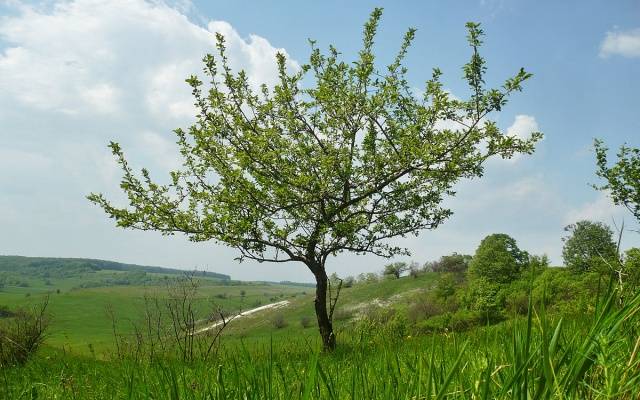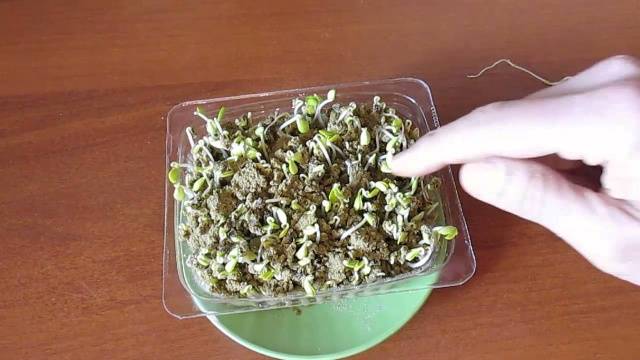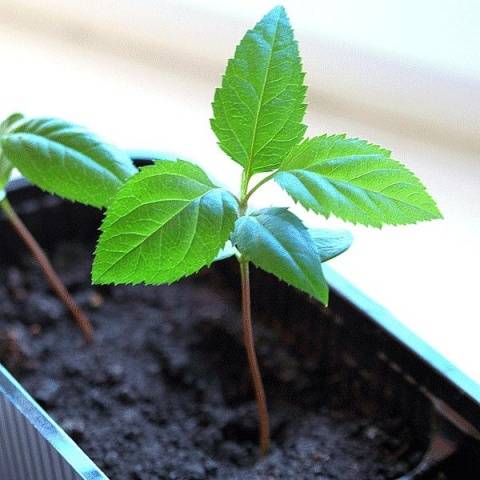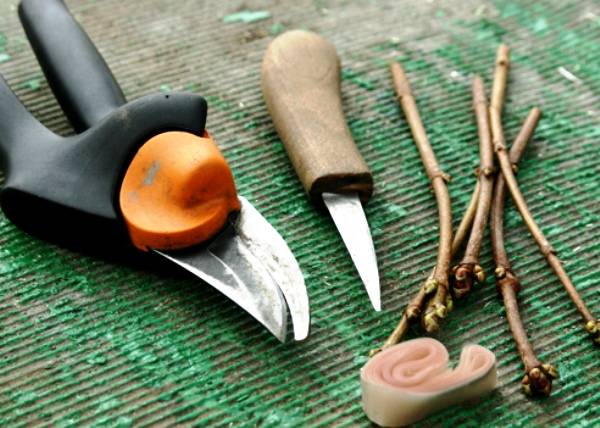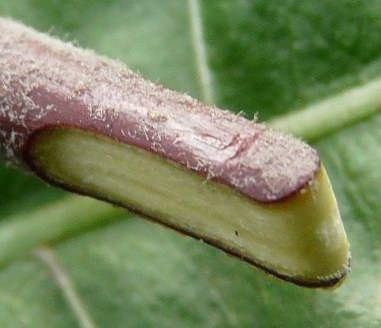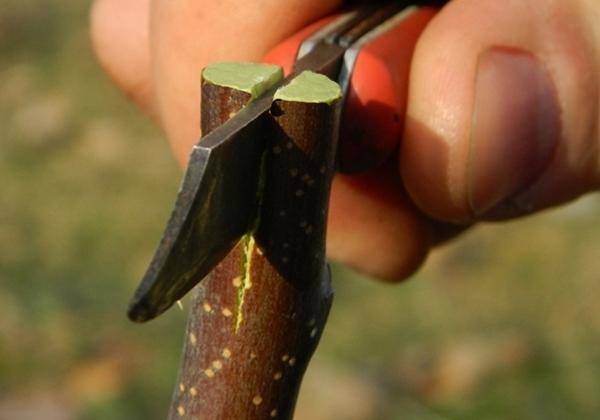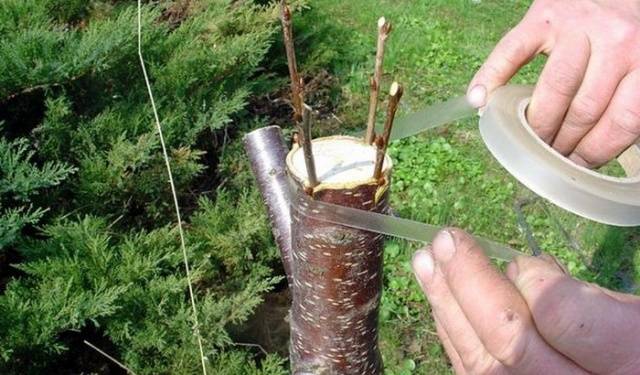Content
The garden is a place where fruit trees are grown, producing tasty and healthy fruits. But many gardeners don't stop there. For them, a garden is an opportunity to create, creating apple orchards with their own hands, on which several varieties are grafted. Such a tree surprises not only by the presence of apples of different colors and shapes, it also bears fruit better, since the conditions for pollination of an apple tree in this case are simply ideal.
But this can only be done by an experienced gardener who has mastered the technique of grafting apple trees and trees of other species in all the subtleties. For those who are just going to carry out the first grafting of an apple tree to the wild - our article.
Why cultivated apple trees are not propagated by sowing seeds
This method, it would seem, is the simplest - sow apple seeds and wait for fruiting. But it will take a long time to wait for it - such apple trees give the first harvest in 5 years, if the tree has been transplanted at least 3 times, and 15 when growing in one place without transplanting. It would seem, well, what's so special about it? We transplanted the apple tree 3 times and we are collecting fruits for 5 years already. But seed crops do not inherit parental traits. This also applies to apple trees. Therefore, we will grow a "pig in a poke". You can spend a long time and get a harvest of practically inedible apples, however, very beautiful. There are exceptions. It was they who gave birth to that group of old and very good folk varieties of apple trees, which are now being planted less and less, yielding to the pressure of selection novelties. Of the advantages of such apple trees, one can note durability and excellent adaptability to growing conditions, and of the disadvantages - a large height, which is inconvenient for care and harvesting and late periods of entry into fruiting. Therefore, grafting an apple tree is the shortest path to the goal with a guaranteed result.
How to plant an apple tree in the wild? Over time, this question arises for every gardener.
What are the vaccinations for?
- The trees have aged, I want to plant them with new, modern varieties of apple trees.
- There is a desire to create a tree-garden on which several different varieties of apples peacefully coexist.
- The small size of the plot does not allow planting all the desired varieties of apple trees, so they are grafted onto one stock.
- I would like to refine the apple tree wild, which has grown without demand on the site.
- Support a sick apple tree with a large hollow or damaged by hares by grafting with a bridge.
- It is impossible to get a seedling of the desired apple tree variety, but there are only cuttings for grafting.
- There is no certainty that the selected apple variety will be winter-hardy enough in this area, but you want to try its apples, so they are grafted into the crown of a growing winter-hardy apple tree.
- I would like to get a dwarf apple tree or propagate a columnar apple variety.
You can find many other reasons that require mastering the technology of such a not too simple, but very interesting activity, like grafting an apple tree. There are practically no seasonal restrictions for its implementation. But the method of grafting an apple tree on a wild game will be different in each season.
Before talking about the technique of grafting an apple tree, you need to understand what a stock is, a scion, where they come from and what criteria they must meet.
A little about scion and rootstock
When grafting an apple tree, one part of the tree is transferred to another so that they grow together, and you get a whole plant. The part of the apple tree that is transferred is called the scion, and the one that is inoculated is called the stock.
The buds or cuttings of the selected varieties of apple trees act as a scion. Cuttings can be prepared in your own garden, bought at a gardening fair, ordered by mail from amateur gardeners, or simply taken from a neighbor. The kidney is more difficult. It cannot dry out, which means that it cannot be stored. The only way to get an apple bud is in your garden or a nearby garden. In order for the cuttings to be of high quality, two points are important: the time of their preparation and proper storage before grafting. The timing of harvesting apple cuttings is as follows:
- the period from the end of leaf fall to the onset of severe frosts is above 10 degrees. Such cuttings of apple trees are used for grafting in winter and spring;
- time after the end of severe frosts - the end of winter or the beginning of spring, while the buds should not yet swell. They are used in the same way as in the first case;
- for summer grafting, apple cuttings are harvested directly in front of them.
We prepare apple cuttings correctly:
- They are harvested only from young trees that are already bearing fruit, the varietal qualities of which are beyond doubt.
- Cut branches from a part, the crown of an apple tree facing south, its middle tier is suitable.
- For grafting, one-year, or at least two-year-old wood, necessarily fully ripe, is suitable.
- The selected branches of the apple tree should not have frost damage, sunburn and other damage.
- The length of the handle is from 30 to 50 cm, the thickness is about 8 mm, about the size of a pencil.
Apple cuttings are stored in a room with a temperature of about 0 degrees. They should be buried in damp but not wet sand. The moisture content of the sand must be kept at the same level. You can keep them outdoors by covering them with sawdust or snow. If you wrap them in a soft, damp cloth and put them in the refrigerator, they'll last pretty well too.
Each cutting should have a tag with the name of the apple tree variety.
Now about the rootstocks for grafting. The fate of the future tree directly depends on their correct choice.
The selection criteria are as follows:
- well-developed root system;
- frost resistance;
- good adaptation to growing conditions;
- maximum compatibility with the selected scion.
What rootstocks do gardeners usually choose for grafting? You can buy a stock in a nursery, grow it yourself, but the easiest way is to graft an apple tree to the wild. It can be taken in the forest or by the road, where wild apple trees grow most often. A young 1-2 year old seedling is suitable, but you can graft an apple tree to an adult tree in a wild game. In this case, it is advisable to inoculate several varieties and get a tree-garden. Usually, this procedure is performed in stages over 2-3 years.
When grafting a columnar apple tree on the wild, only a one-year-old seedling is chosen as a stock, the grafting is done close to the root collar and do not forget to correctly form the crown of the grafted seedling in the future.
How to grow a wild apple tree for vaccination
The easiest way is to sow the seeds of an apple tree that has shown its frost resistance. You can borrow them from your neighbors or in your own garden. The classic is the Antonovka apple variety, but other varieties that are unwilling to freeze in frosty winters are also suitable. The algorithm for growing a wild apple seedling is as follows.
- Seed stratification. It can be natural if they are sown on a seedling bed immediately after picking apples, and artificial - in a box with wet sand and the addition of activated carbon, which is placed in the refrigerator for 2-3 months. In this case, it is convenient to observe the stratification process and, if necessary, adjust the conditions for keeping seeds. Refrigerated stratification begins in mid-January.
Before stratification, the seeds are washed to remove the germination inhibitor, a substance on their surface. - The hatched seeds of apple trees are sown on the beds, followed by a mandatory pick in the phase of cotyledon leaves. The central root is pinched so that the root system of the apple tree seedling is fibrous. You can dive them into separate pots with a volume of at least 0.5 liters, and then grow them to inoculation in a larger pot. We get a seedling with a closed root system. The growing soil consists of garden soil, seasoned peat and sand in equal proportions. A glass of wood ash is added to the bucket of the mixture and according to Art. spoon of superphosphate and potassium sulfate.
- During the growing season of a young apple tree, several waterings and 2 feeding with mullein infusion or ammonium nitrate will be required.
With good care, we will get a one-year-old developed apple tree sapling, which is time to graft.
What is needed for vaccinations
First of all, you need a grafting and copulating knife. The second has a curved blade. The tool must be very sharp. It is better to entrust its sharpening to a specialist who will do it on special equipment. If there is no way to buy such a knife, you can do with an ordinary, but well-sharpened knife.
Required tools:
- Pruner.
- Saw-hacksaw.
- Garden var or oil paint.
- Wrapping material: soft polyethylene tape, insulating tape, paper twine.
For those who will carry out the first vaccinations in their life, he will greatly facilitate this process.
What are the vaccinations
By timing, they are divided into winter, spring and summer. Some gardeners carry out vaccinations at the beginning of autumn, but the survival rate in this case is low.
The following vaccinations are distinguished by the method of administration:
- in the butt;
- copulation is simple and improved;
- for the bark;
- into the cut made in the scion trunk;
- budding.
The last inoculation is performed in the second half of summer with the beginning of the summer sap flow period. The first three can be done both in the spring and in the winter in the room - the so-called table-top grafting. The rootstocks for her are stored in the basement so that the roots do not dry out, ideally if they are grown in pots. Vaccination is performed indoors, using a method convenient for yourself. The grafted seedlings are stored until planting in a cold basement, placing the root system in a box with wet steamed sawdust or sphagnum moss.
But spring grafts work best. About, how to plant an apple tree to the wild in the spring, tells the video:
Let's talk about how to plant an apple tree in the spring in a step-by-step way into a split.
This method is suitable for vaccinating wild animals of any age. Both the scion and the rootstock, which have the same thickness, and the wild, the diameter of which is larger than the grafted cutting, grow well together. In this case, you need two of them.
- We take out and select the cuttings.
- We prepare the stock - we cut off part of the trunk or branch, if it is a skeletal branch, then it should be about 20 cm to its base, the wild is cut down at a height of about 20 cm from the ground, a thick trunk, depending on the specific situation. We additionally clean the cut with a knife. Experienced gardeners use a hacksaw for cutting metal - it gives a smoother cut.
- If the thickness of the cutting and the grafted branch is the same - one split is made, if the stock is much thicker - one split is made, into which 2 cuttings or a cruciform split for 4 cuttings are inserted.
- A thin twig is split with a knife to a depth equal to 3 to 4 of its diameters; in thick branches, the place of splitting is first incised with a knife, inserted there and hit with a hammer until a gap of the required depth is obtained; at the same time, a wooden wedge or a screwdriver is inserted into the slot to make it easier to insert the cuttings.
- On the selected cutting, we make the upper cut, leaving from 3 to 5 buds.
- We grind the bottom with a wedge, the length of the cut part is 3-4 times the diameter of the cutting.
The cut is carried out in one movement, without crushing the wood. Do not touch the slices with your hands. If you can't work quickly or several cuttings are being prepared at once, they need to be put in a glass of water, in which we dissolve a teaspoon of honey. - We insert the wedge part of the cutting into the cut so that 1-2 mm of the cut part protrudes outward; in cuttings of the same diameter, the bark of the scion and rootstock should touch, in other cases we combine the cambium tissues.
- When all the cuttings are inserted, we take out a wooden wedge or a screwdriver and we carry out the strapping of the inoculation for a snug fit; for this, use film, electrical tape or twine; the material needs to be slightly pulled, the electrical tape is wrapped with a sticky layer outward. Experienced gardeners advise using ribbons cut from PVC tablecloths, they have the best elasticity.
- All open places, including the upper cuts of cuttings, are covered with garden pitch.
- To reduce the evaporation of moisture, a cellophane, or better a paper bag, is put on the vaccine, it is fixed, leaving a small crack.
The cleft grafts are done in early spring before the buds swell on the trees. Such vaccinations can be done at the end of winter, if severe frosts are not expected.
It so happens that the spring grafting of the apple tree has failed. In order not to waste precious time, it can be repeated in the summer using the peephole budding method.
How to properly graft an apple tree by the budding method will tell the video:
And in conclusion, general tips to help avoid vaccination failures:
- all operations for the preparation of the scion are done quickly; ideally, the finished cutting should not be outdoors for more than 10 seconds;
- the instrument and hands must be clean, and preferably sterile;
- if several trees are grafted, after each grafting, the instrument is sterilized by rubbing with alcohol.
Grafting an apple tree to the wild is an exciting experience. Having mastered it, you can significantly expand the range of varieties without changing the planting area.
